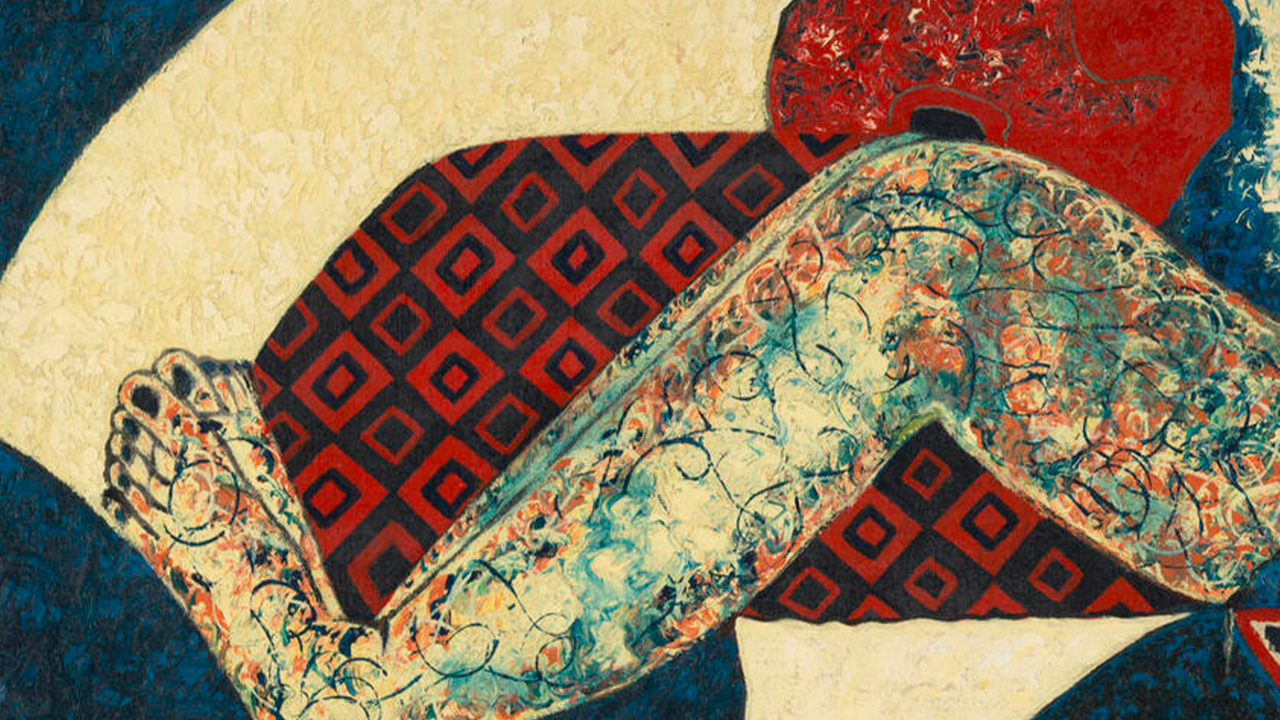Helena Almeida
Jeu de Paume, Paris, France
Jeu de Paume, Paris, France

It opens with a canvas slipping off its frame. Or is it a curtain slipping off its window? Perhaps it’s both, somehow, at once. Further into the show, a canvas is rolled up like a window blind. For the Portuguese artist Helena Almeida, the support is rich with ambiguity: it both allows us to see and blocks our view. At her first show, in 1967, she hung her paintings back to front.

There are no such hijinks at this retrospective at the Jeu de Paume. (Indeed, the curatorial approach is markedly sober.) Almeida, who was born in 1934, is interested in the interplay of media, in the phenomenological substance of painting, of line, of image. She plays with materiality: painting is a clump of something to be grasped and pocketed, as in Inhabited Painting (1976), or blue ectoplasm to be spewed from the mouth, as in Study for Inner Improvement (1977–78). The former is from a series of witty self-portraits, also titled ‘Inhabited Painting’ (1975–76), which combines photography and painting; the artist paints an Yves Klein blue smog around herself, as if she were trapped inside the lens, painting to protect herself from its view. In a series of drawings (‘Inhabited Drawing’, 1975), line is something to create with a pen or pencil, until it becomes a piece of horsehair rising up from the canvas. And yet, there is a real purity to Almeida’s use of her materials; when she finds the terms in which she wants to articulate something, she sticks to them. Horsehair, for instance, threads through work from the early 1970s into the mid-1980s, as if she had a huge stash of it at home and slowly used it up.

Of all this clever, affecting work, the highlight is the series ‘Inhabited Canvas’ (1976): nine black and white photographs of the artist walking out from behind a structure that could be an empty canvas frame or a window frame. She is visible behind it, wearing a white top and trousers and, as she emerges, her arms and face are covered with some kind of gauzy material or, perhaps, from the way the light hits it, a supple yet sturdy plastic drop-sheet. The parts of her body that are still hidden are not covered in gauze. She seems to be asking us to think about the way we view self-portraits: when we try to see the artist as artist, revealing the person behind the work, she’s never unmediated by the veil of our expectations or a priori ideas about creation, genius or gender. Another Inhabited Canvas (1976) has her outdoors, wearing a full-body smock with a blank canvas strapped to her torso.

The later work turns forcefully from the flattened space of the canvas to the kinetic body of the artist, in a suite of imposing photographs and a pair of videos: one recalls Mona Hatoum’s Performance Still (1985), photographs of the artist slowly walking barefoot in Brixton, heavy boots tied to her ankles. In Untitled (2010), Almeida ties her leg to that of her husband, the architect Arturo Rosa, and they trudge, trussed in the three-legged-race of marriage, towards and then away from the camera. In Seduce (2002), she stands on one leg, wearing a high-heeled shoe, stretching her hamstrings at an uncomfortable, not particularly seductive angle, while an aria plays. Art is, for Almeida, by turns playful, ironic, inescapable and uncomfortable.























